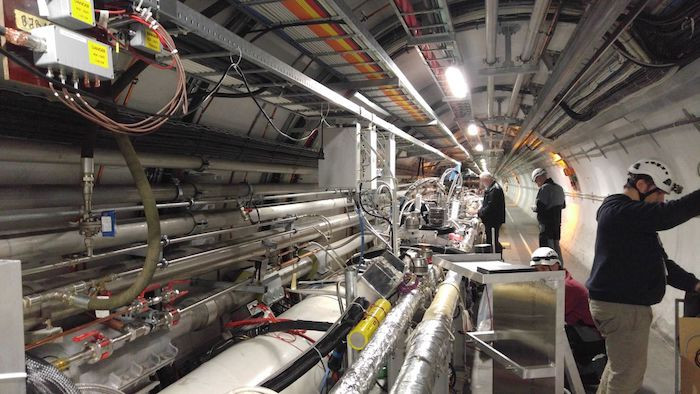What is Odderon? LHC uncovers possible subatomic quasiparticle which existed only in theory
Scientists have been searching for the elusive odderon since the 1970's.

A new experiment, involving over 100 physicists from eight different countries working with the Large Hadron Collider (LHC), has uncovered possible evidence of the existence of a subatomic quasiparticle called odderon.
Although physicists have theorised the existence of odderon for decades, no one has been able to actually see the elusive subatomic particle. The new research is the first hint that the elusive odderon may actually exist.
"We've been looking for this since the 1970s," Christophe Royon, a professor at Kansas University's department of physics and astronomy, said in a statement.
The experiment saw scientists observe scenarios in which protons remained intact, even after a collision. In previous experiments, scientists observed collisions where only an even number of gluons exchanged between different protons. Gluons are elementary particles that act as a glue, holding together quarks. Quarks combine to form hadrons, which include protons and neutrons.
However, the new research saw physicists observe potential evidence of an odd number of gluons, without any quarks, being exchanged during collisions.
"The protons interact like two big semi-trucks that are transporting cars, the kind you see on the highway," said Timothy Raben, a particle theorist at Kansas University, who has worked on the odderon. "If those trucks crashed together, after the crash you'd still have the trucks, but the cars would now be outside, no longer aboard the trucks — and also new cars are produced (energy is transformed into matter)."
According to the researchers, odderon is the contribution of all types of odd gluon exchanges. The subatomic particle represents all of three, five, seven or other odd numbers of gluon.
"Until now, most models were thinking there was a pair of gluons — always an even number," said Royon. "Now we measure for the first time the higher number of events and properties and at a new energy. We found measurements that are incompatible with this traditional model of assuming an even number of gluons. It's a kind of discovery that we might have seen for the first time, this odd exchange of the number of gluons. There may be three, five, seven or more gluons."
The new study saw scientists using the TOTEM experiment and the data gathered was collected at 13 teraelectronvolts (TeV) – which is the fastest rate at which scientists have been able to collide protons till date. The new findings provide new details to the Standard Model of particle physics.
"This doesn't break the Standard Model, but there are very opaque regions of the Standard Model, and this work shines a light on one of those opaque regions," said Raben. "These ideas date back to the '70s, but even at that time it quickly became evident we weren't close technologically to being able to see the odderon, so while there are several decades of predictions, the odderon has not been seen."
The findings of the new research have been published on the arXiv and CERN preprint servers in two papers.






















